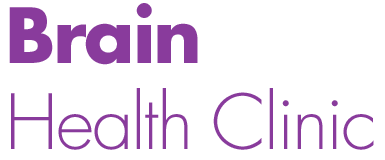
Anxiety was a significant side effect of dealing with the unknowns created by the pandemic. To some extent, many of these fear-inducing factors continue to exist in one way or another. The result is an upsurge in people reporting severe anxiety. In 2022, the World Health Organization observed that the “global prevalence of anxiety and depression increased by a massive 25%.” If anxiety is affecting your day to day activities and preventing you from doing the things you used to do or want to do, the Brain Health Clinic can help with neurofeedback therapy.
An Objective Neurofeedback Study
Many of the studies about neurofeedback therapy for anxiety are considered subjective studies, that is they rely on the test subjects’ own descriptions of how they feel to determine if the treatment protocols were effective. For many researchers, while such studies are still considered useful, the gold standard for experiments is the use of objective measurements — data that does not rely on patient input, but instead on a consistent and accurate form of measurement. To create an objective study on the effectiveness of neurofeedback for reducing anxiety, an international team of researchers in Beijing, China studied this issue. Their stated goal was this: “In the current period of [the] epidemic, most people suffer from anxiety, whether it is healthy people or patients with anxiety disorders. We hope that our experiment can provide people with relief from their anxiety.”
Also noteworthy about the Beijing study, found in the October 2021 issue of Frontiers in Neuroscience, is that they used a control group — a comparison set of subjects to provide a contrast to the anxiety patients receiving neurofeedback therapy. Their control was a set of healthy patients without anxiety disorders. Would neurofeedback therapy for anxiety affect them in any way, especially in comparison to the anxiety subjects?
How to Measure for Anxiety
Scientists already have confidence in the effectiveness of neurofeedback for controlling anxiety. “A number of studies in the extant literature have affirmed that in the treatment of anxiety disorders, neurofeedback focuses on the central nervous system and the brain…to improve neuroregulation and stability.” From these studies it is understood that an increase in the strength of alpha brainwaves reduces anxiety, while diminishing alpha wave activity is associated with increased anxiety.
As may be expected, healthy subjects showed little change in their brainwave activity. They were certainly less anxious, with higher alpha wave activity, after their therapy sessions. Yet, these subjects were not anxious to begin with — little change was expected, and that was the clinical observation.
For anxiety subjects, however, the changes in brainwave activity after mindfulness training via neurofeedback were noticeably different. They showed significant improvements in alpha wave activity, and also in brainwaves called theta and gamma waves. This demonstrated via an objective method that the neurofeedback therapy was actually creating change in brainwave patterns, leading to the expected outcome of reduced anxiety, and that the changes were significant compared to a control group.
Rely on the Science
The researchers concluded by stating: “Through the analysis of neurophysiological signals, it can be concluded that our experiment can alleviate the anxiety symptoms of the subjects.” They found neurofeedback therapy to be “simple, safe, and convenient,” with less chance of side effects compared to pharmacological treatments for anxiety. If you would like to discover the benefits of neurofeedback therapy for anxiety, follow the researchers’ advice and contact the Brain Health Clinic for a free consultation.
